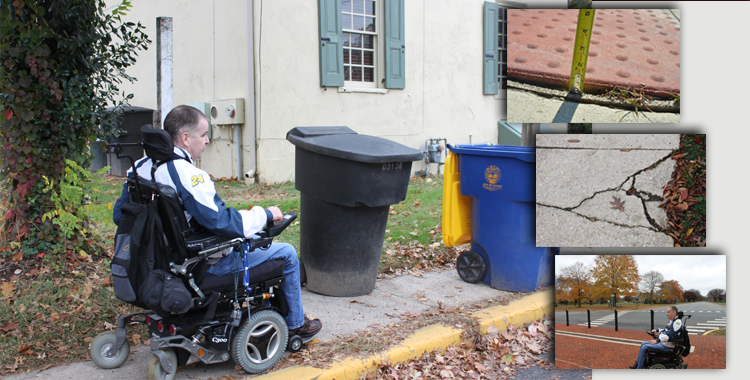This video, entitled Creating ADA-Accessible Communities, highlights Americans with Disabilities Act (ADA) accessibility issues within pedestrian environments. The video features DelDOT ADA Title II Coordinator John McNeal using a Go-Pro camera to record, from his perspective, common ADA challenges navigating pedestrian facilities in an urban setting.
Under ADA Title II, public entities (including state and local governments) are required to ensure accessible design, construction, and maintenance of all transportation projects—including pedestrian facilities. Pedestrian facilities include public sidewalks, shared-use paths, curb ramps, crosswalks, pedestrian islands, pedestrian signals, transit stops, and other pedestrian features within the public right-of-way. However, persons with disabilities often face accessibility barriers caused by physical obstructions, improper design, or insufficient maintenance of pedestrian infrastructure.
Jurisdictions must address these issues to ensure that access for persons with disabilities is provided wherever a pedestrian facility is newly built or altered. To comply with ADA, the same degree of convenience, connection, and safety afforded the public must also be available to pedestrians with disabilities. Ultimately, pedestrian facilities must be readily accessible to and usable by persons with disabilities.


